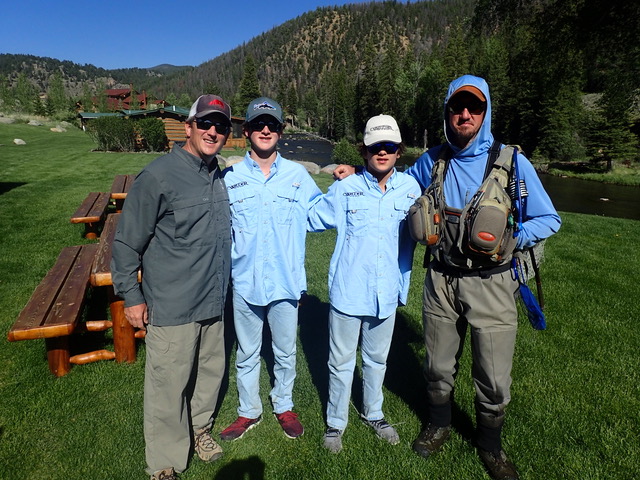
Well, it finally happened and we had much needed rain here in Southwestern Colorado. For the past few weeks it has not only been dry but the fire danger increased to the point of almost having our National Forest shut down. Fortunately we dodged the bullet on that one and things are looking good for another great season of summer fly fishing. Whew!
Flows on the Taylor River are at 325 CFS and have been that way for the last couple of weeks. While this is very low for this time of year, summer fly fishing conditions are excellent, the water is clear and our big hatches of the year are getting underway. Look for flows to remain close to the same through July. The 1st of July another 50 CFS will be released from the dam raising the outflow from 250 CFS to 300 CFS. However, unless the rain continues in earnest, the dwindling tributaries should make up for this increase from the dam and I expect flows to remain relatively stable. These steady flows should be great for summer fly fishing.
Right now on the Taylor, we are seeing Yellow Sallees, Orange and Yellow Stoneflies, several types of Caddis and the occasional Blue Winged Olive and Pale Morning Dun. Most of these bugs will hatch out during the early afternoons and evenings. We have been seeing fish rising, particularly for egg laying Caddis that bounce off the water laying their eggs. The most effective way to fish these risers is to imitate the naturals. Not only in size, shape and color but also how they behave on the water. You will see the adult Caddis dipping onto the water surface and bouncing around to lay their eggs. To imitate this, I like to use a long leader, say a 9’ 4x leader with an additional 2 feet of 5x tippet at the end and an Elk hair or Parachute Caddis for a fly, sizes 16-20. While occasionally a dead drift presentation will work, this is one of the few times of year where a skated fly is much more effective. Cast across or across and down and twitch your fly along the surface, pulling it up and dropping it down until the cast is over. The trick is to keep your fly well greased and on the surface when you do this. The extra long leader will also help keep the fly on top. If your fly isn’t working, experiment with different size and color Caddis until you find something that works.
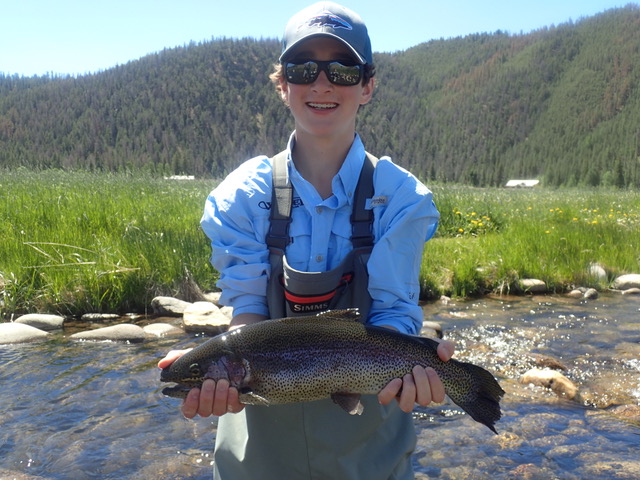
This time of year with multiple hatches occurring at the same time, it is important to figure out which bug the fish are eating as they will generally concentrate on one species. Your first clue is looking at the rise form. A splashy rise, signifies that the fish are eating Caddis, a slow sip indicates they are eating Mayflies. Take a few minutes and watch the river for clues. It is always worth the effort to wade into a pod of rising fish and catch a few of the bugs they are eating if you don’t know what they are. Even though you will spook those fish, the information that you glean will help you catch lots of fish in the next spot. Also keep in mind that things may change during the day. For instance you might find fish eating Yellow Sallees in the morning, Mayflies in the afternoons and Caddis throughout the entire day and late evening. Remember that your two best weapons are stealth and observation. Watch what’s going on and stealthily get yourself into a good position and make soft casts to the fish.
I have found that the most important factor in getting a fish to rise to your fly on the Taylor is a soft presentation. Work on getting your cast to straighten out in the air and gently fall to the water. Hard hits and continuous casting scare fish. Soft casts and quiet presentations catch fish.
In the mornings, start with a dry/dropper and fish this way until you see fish beginning to rise. We have had success with lots of different droppers now as lots of different bugs are hatching. Try Pheasant Tails, Hare’s ears, Caddis rock worms, Drake nymphs and Stonefly nymphs in sizes 8-20. Make sure that your dry fly is buoyant enough to float the nymph you are going to use. This is a key element in dry/dropper fishing. Too light of a dry or too heavy of a dropper can make things challenging for the angler.
Look for excellent dry fly fishing over the next month. We will see more Caddis, Stoneflies, BWO’s, PMD’s, Flavs and Green Drakes. Remember that most of our large Mayfly hatches start at 1 pm so get on the water a little bit early and watch for the action the start. As we get into the evening hours, think Caddis right up until dark.
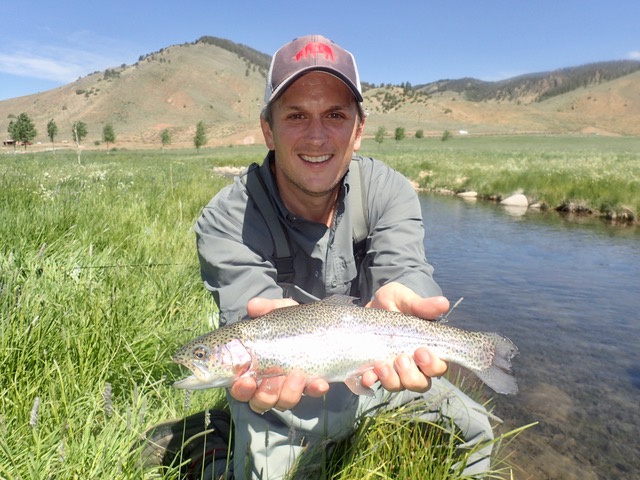
The Dream Stream has been on fire this week. A ton of wild browns have entered the Stream through the ditches adding to the resident population of rainbows and fish populations are very high. Fish are eating a variety of flies including Hopper imitations such as PMX or Para Hopper as well as a host of smaller flies such as Para Adams, PMD’s and BWO’s. Look for rising fish and then make your selection.
If the dry isn’t working, don’t hesitate to tie on a dropper. Just make sure that your dropper here is pretty short, say 18-24 inches. Much longer than that and you will find the bottom. We have been using Bead head Pheasant tails, Hare’s Ears and Princes in size 16 with great success.
As far as leaders and tippets go, I recommend using a 9 foot leader with no less than 4x on the Stream as the fish are pros at cutting fine tippets on the sharp rocks in the water. If you hook a large fish be ready to move around and keep him from diving under the rocks where it is almost certain you will lose him. Change your direction of pull with the rod to encourage the fish away from the rocks by moving up or down stream and reaching around with that rod tip as needed. Landing a large fish can be a challenge here so if you hook a big one, pay close attention and keep steady pressure to tire him out quickly.
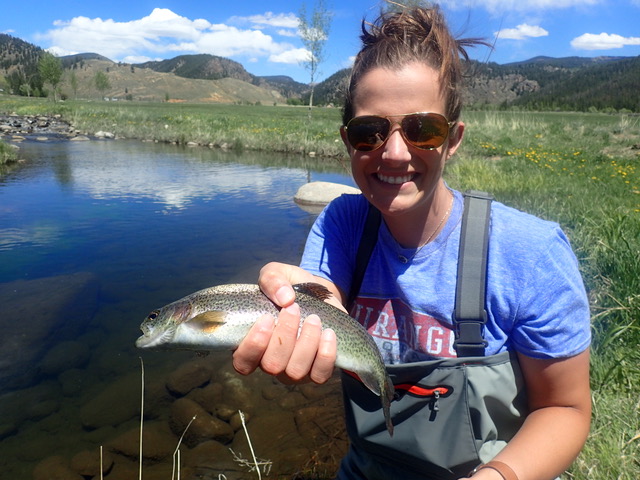
Although the stream is nice and cool right now with well oxygenated water, it is always a good practice to not remove the fish from the water except for a very quick picture. Remember that fish do not breathe air and every minute they are out of the water reduces their survival chances. Handle fish only with wet hands and PLEASE make sure all of your flies have the barbs pinched down. This is the single most important thing you can do to assure the fish’s survival and minimize damages. If you break off a fish with a barbless hook, the odds are that he will get the fly out of his mouth in the next few minutes and be fine. However with a barb, that fly may remain in the fishes mouth for a long time and hinder his chances at survival.
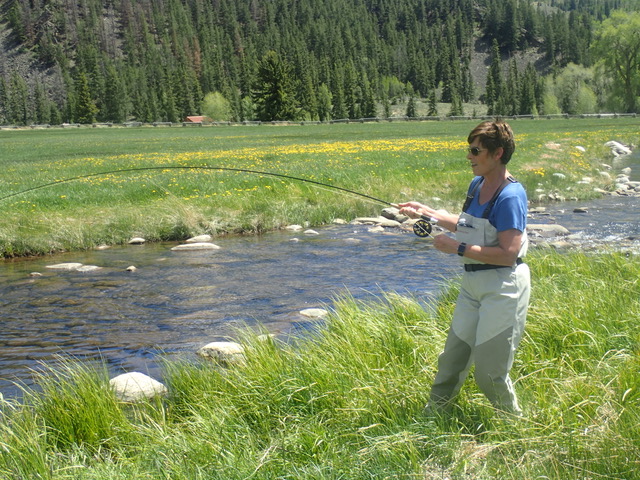
As alway on the Stream, move slowly and quietly when you approach a pool. If the fish don’t know you’re there they can be easy to catch but the minute they sense danger they become much harder to catch. Again, soft presentations make a huge difference. Sneaking up to a pool only to crash the water with your cast is counter productive.
Hatch wise, I have been seeing quite a few PMD’s (yellow mayflies size 16) hatching throughout the afternoons. There are also lots of Caddis and in the next couple of weeks we’ll see the big Green Drakes and the fish will go crazy.
If you are fishing the Stream and catching lots of fish, don’t get carried away. After 6-10 fish it may be time to venture out to the river and try your hand there. No point in trying to catch every fish on the Stream.
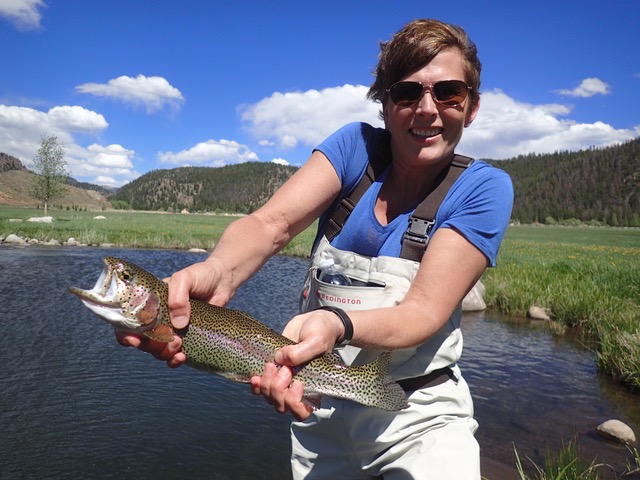
All of the 6 ponds at Wilder are holding plenty of fish. You can see them rising throughout the day for tiny midges and right now, large Damselflies. You will see fish cruising the grass edges looking for Damsels hatching as they climb up the stalks to emerge as well as fish jumping acrobatically to get the flying Damsels out of the air. Last week there were clouds of Damsels on all of the ponds and the fish were having a field day eating all day long.
My favorite way to fish the ponds is by sight. Walk up slowly and get the light right so you can see into the water as you slowly walk the banks. If you see a fish, try to cast your fly about 4-8 feet from him and see how he reacts. Somedays the fish will accept a fly that lands on their heads, other days they will instantly spook. Experiment around and try to find the magic distance where they can see your fly but not spook. On windless and cloudless days, the fish can spook with your false casts in the air so try to false cast to the side of the fish and make your final, presentation where you want it.
We have been fishing well with a variety of flies in the ponds including hopper patterns, midges, small mayflies and lots of different droppers. As in the Stream I recommend not going finer than a 4x tippet unless it is absolutely necessary. There are some brutes here and they will dive in the weeds and break off fine tippets in a heartbeat.
Look for fish eating Damsels for the next week or two and try to take advantage of this prolific hatch before it ends. The male Damsels have a bright blue body and we have several imitations in stock that can be very effective.
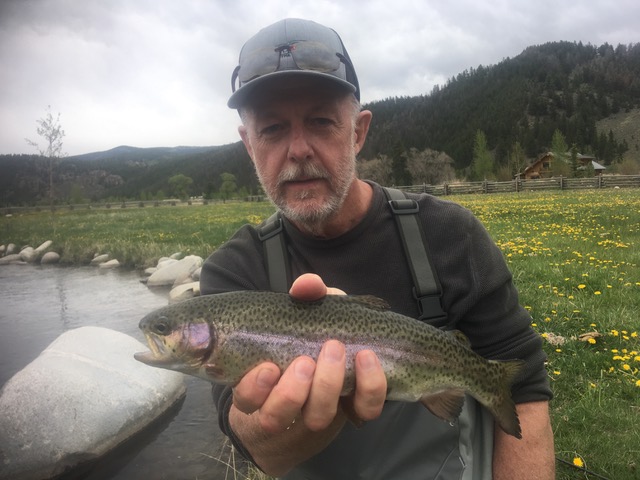 All in all it is shaping up to be another excellent season of summer fly fishing at Wilder. With low water conditions, the big hatches that usually occur during run off and dirty/ high water will be happening with low/clear water conditions. Great news for the dry fly fisherman. This is the time to get out on the water and test your skills during the epic hatches that are coming up.
All in all it is shaping up to be another excellent season of summer fly fishing at Wilder. With low water conditions, the big hatches that usually occur during run off and dirty/ high water will be happening with low/clear water conditions. Great news for the dry fly fisherman. This is the time to get out on the water and test your skills during the epic hatches that are coming up.
Again a reminder to PLEASE de-barb all of your hooks and minimize handling the fish to assure a high survival rate of captured fish.








